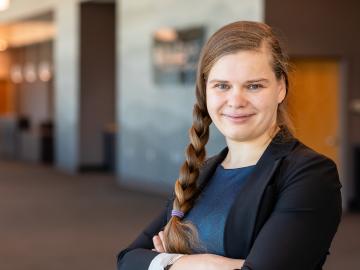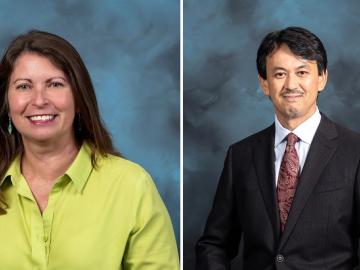Filter News
Area of Research
- (-) Computational Engineering (1)
- (-) Materials (57)
- (-) Neutron Science (24)
- Advanced Manufacturing (7)
- Biological Systems (1)
- Biology and Environment (4)
- Building Technologies (1)
- Clean Energy (61)
- Climate and Environmental Systems (2)
- Computer Science (8)
- Fusion and Fission (1)
- Fusion Energy (6)
- Isotopes (1)
- National Security (7)
- Nuclear Science and Technology (11)
- Quantum information Science (3)
- Supercomputing (31)
- Transportation Systems (1)
News Topics
- 3-D Printing/Advanced Manufacturing (6)
- Advanced Reactors (1)
- Artificial Intelligence (2)
- Big Data (1)
- Bioenergy (3)
- Biomedical (2)
- Chemical Sciences (1)
- Clean Water (2)
- Composites (2)
- Computer Science (5)
- Critical Materials (1)
- Cybersecurity (1)
- Energy Storage (7)
- Environment (7)
- Fusion (2)
- Isotopes (1)
- Machine Learning (2)
- Materials (1)
- Materials Science (20)
- Microscopy (5)
- Molten Salt (1)
- Nanotechnology (6)
- Neutron Science (19)
- Nuclear Energy (6)
- Partnerships (1)
- Physics (3)
- Polymers (2)
- Quantum Science (3)
- Sustainable Energy (5)
- Transportation (6)
Media Contacts

A collection of seven technologies for lithium recovery developed by scientists from ORNL has been licensed to Element3, a Texas-based company focused on extracting lithium from wastewater produced by oil and gas production.

Scientists at ORNL have developed 3D-printed collimator techniques that can be used to custom design collimators that better filter out noise during different types of neutron scattering experiments

Electric vehicles can drive longer distances if their lithium-ion batteries deliver more energy in a lighter package. A prime weight-loss candidate is the current collector, a component that often adds 10% to the weight of a battery cell without contributing energy.

Illustration of the optimized zeolite catalyst, or NbAlS-1, which enables a highly efficient chemical reaction to create butene, a renewable source of energy, without expending high amounts of energy for the conversion. Credit: Jill Hemman, Oak Ridge National Laboratory/U.S. Dept. of Energy

ORNL computer scientist Catherine Schuman returned to her alma mater, Harriman High School, to lead Hour of Code activities and talk to students about her job as a researcher.

Friederike Bock, a Eugene P. Wigner Fellow, wants everyone to know scientists aren’t just robots—they want to help others understand their research, and they have wide-ranging interests.

Researchers at Oak Ridge National Laboratory demonstrated that an additively manufactured polymer layer, when applied to carbon fiber reinforced plastic, or CFRP, can serve as an effective protector against aircraft lightning strikes.

The American Nuclear Society (ANS) has recognized two nuclear researchers, Julie G. Ezold and Yutai Katoh, both of the Department of Energy’s Oak Ridge National Laboratory, at its annual Winter Meeting and Nuclear Technology Expo, held in Washington, D.C.

An international team of scientists, led by the University of Manchester, has developed a metal-organic framework, or MOF, material

Students often participate in internships and receive formal training in their chosen career fields during college, but some pursue professional development opportunities even earlier.




